Are you looking to understand your market better and make informed decisions? A well-crafted market research proposal can be your guiding star in navigating this complex landscape. It not only outlines your research objectives but also demonstrates your commitment to making strategic business moves. Ready to dive deeper into crafting the perfect proposal? Let's explore the essential elements that will pave your way to success!

Executive Summary
Market research proposals outline the core objectives, methodologies, and anticipated outcomes of a research initiative aimed at understanding market dynamics. The research seeks to identify customer preferences and market trends within the retail sector, particularly focusing on consumer behavior patterns influenced by demographic factors such as age, income, and geographic location. Utilizing methodologies like online surveys (targeting a minimum of 1,000 respondents) and focus groups held in key urban areas (like New York and Los Angeles), the study aims to gather qualitative and quantitative data. Anticipated results will help businesses strategize effectively, enhance product offerings, and improve overall customer satisfaction, ultimately driving sales growth and brand loyalty.
Research Objectives
Market research proposals typically outline specific research objectives that guide the study's direction and scope. Key objectives may include identifying consumer preferences, understanding competitive landscapes, analyzing market trends, and assessing product viability. For instance, analyzing the target demographic's behaviors such as purchasing patterns in urban areas (like New York City or San Francisco) can reveal essential insights. Further, investigating the impact of social media marketing on brand awareness can enrich comprehension of digital engagement levels among millennials. Additionally, evaluating customer satisfaction levels using surveys with at least a 95% confidence interval will ensure robust data for strategic decision-making. These objectives collectively aim to provide actionable insights that drive business growth and enhance marketing strategies.
Methodology and Approach
In market research, a well-structured methodology is crucial for obtaining reliable data. Surveys (both online and offline) utilizing platforms like Google Forms can gather quantitative insights from targeted demographics. Focus groups involving diverse participants (ideally 6-12 individuals) convene to discuss consumer attitudes towards specific products or services, providing qualitative data that highlights emotional triggers and brand perceptions. Additionally, observational research conducted in retail environments, such as supermarkets in urban areas like New York City, captures real-time purchasing behaviors and patterns. Data analysis using statistical software (e.g., SPSS or R) will allow for identifying trends and correlations within the collected data, ensuring comprehensive understanding for effective strategy formulation.
Target Audience and Sample Size
In market research, identifying the target audience is essential for gathering relevant insights. For a study focused on consumer preferences, the target audience may include adults aged 25-45 with disposable income, residing in urban areas such as New York City and Los Angeles. Aiming for a sample size of 1,000 respondents ensures a diverse representation of demographics, including gender, ethnicity, and socio-economic status. This sample size provides a margin of error of approximately 3% at a 95% confidence level, increasing the reliability of the findings. Key demographics such as household income levels, educational background, and purchasing behavior will be analyzed to gain a clear understanding of the market dynamics.
Timeline and Deliverables
The market research proposal includes a detailed timeline and specific deliverables to ensure effective execution of the project. Key milestones include the initial research phase, scheduled for completion by November 15, 2023, which involves gathering quantitative data from industry reports and qualitative insights through focus groups. A preliminary findings report will be delivered on December 1, 2023, summarizing key trends and consumer behavior patterns. The second phase, analysis and interpretation of data, will occur between December 2-15, 2023, leading to a comprehensive final report that outlines actionable recommendations by December 20, 2023. Additionally, a presentation of findings will be scheduled for a client meeting on December 22, 2023, providing a visual representation of insights to inform strategic business decisions.
Letter Template For Market Research Proposal Samples
Letter template of market research proposal for consumer behavior analysis.
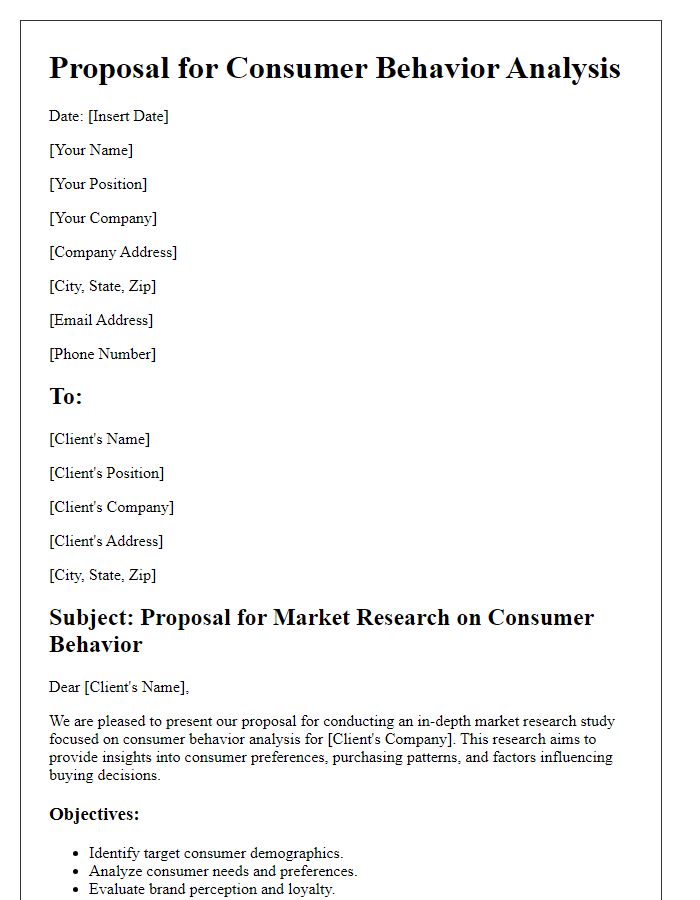
Letter template of market research proposal for customer satisfaction survey.
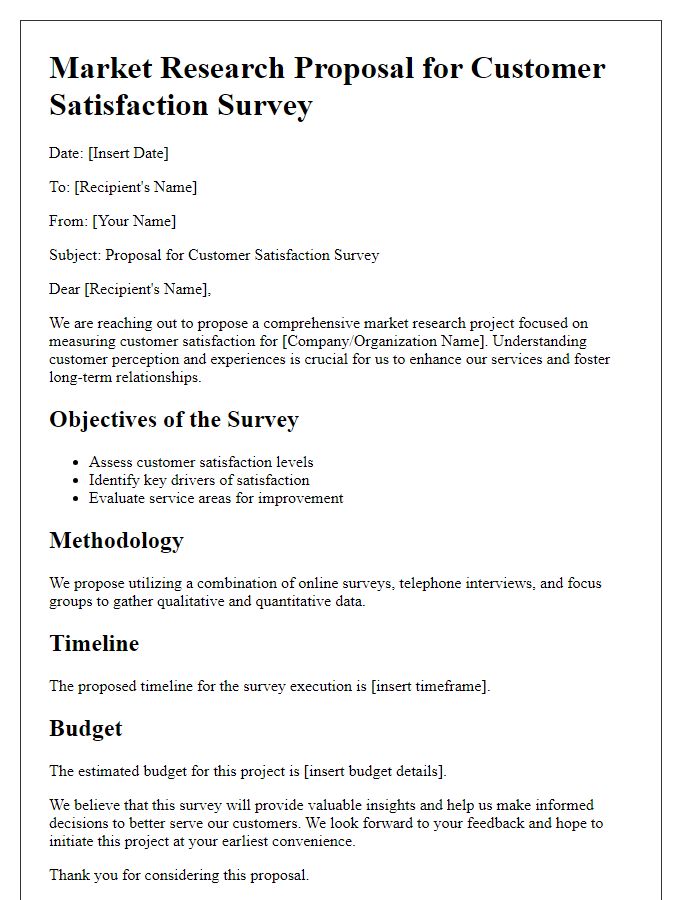
Letter template of market research proposal for emerging trends assessment.
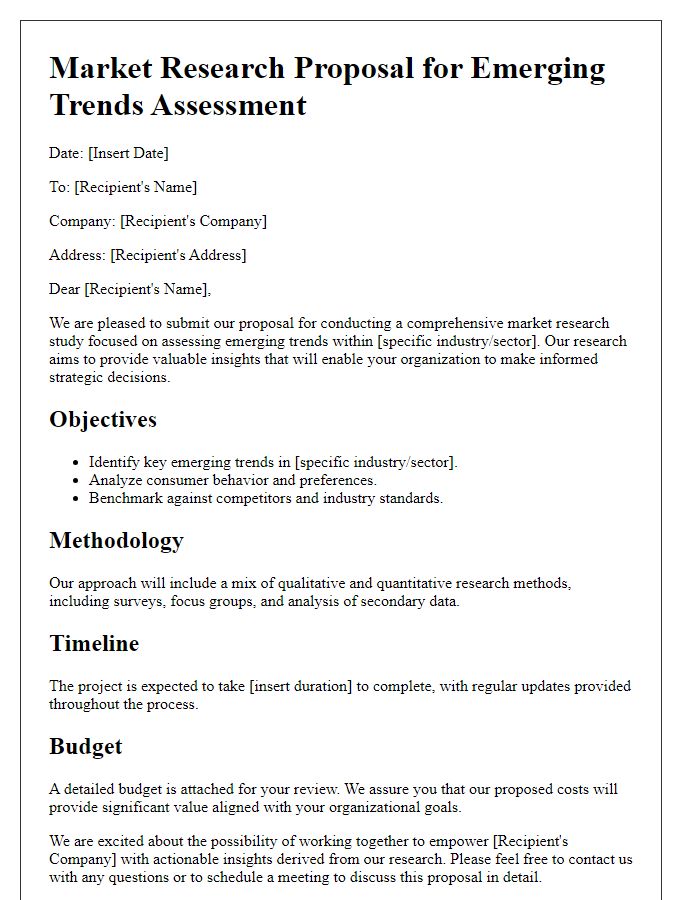
Letter template of market research proposal for target audience profiling.
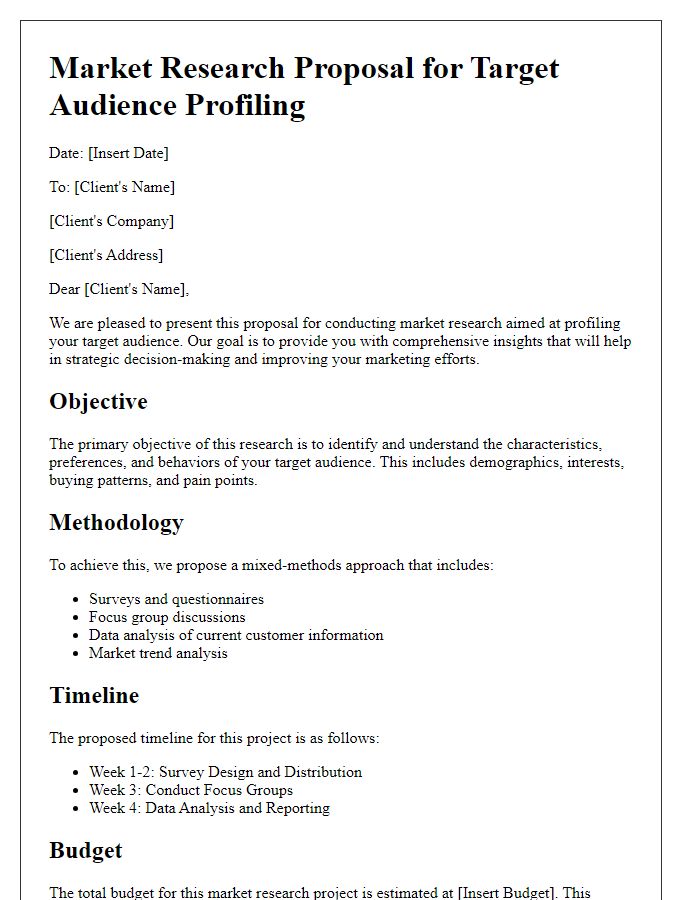
Letter template of market research proposal for market feasibility study.
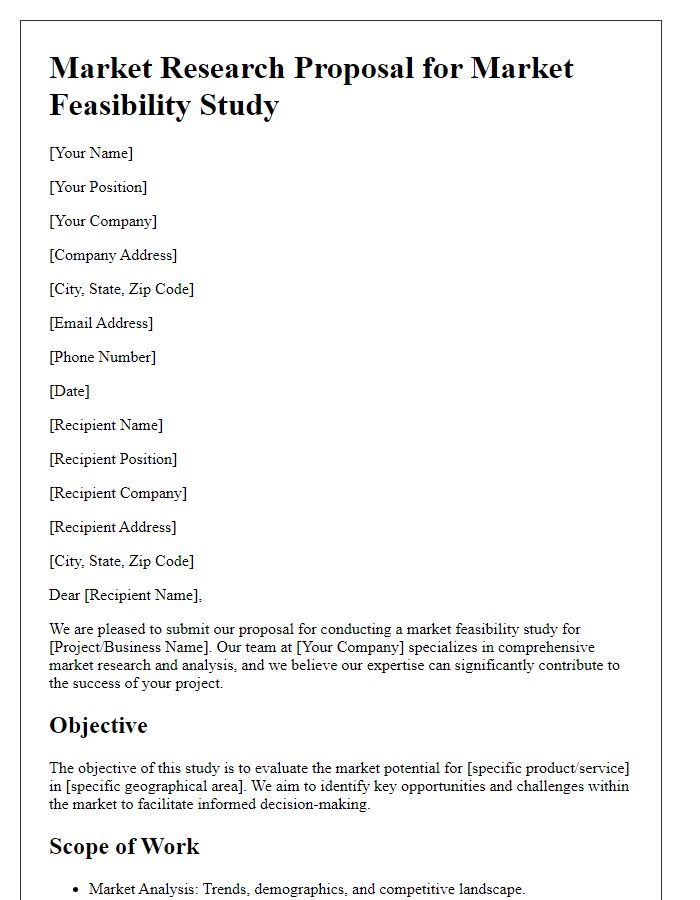
Letter template of market research proposal for industry benchmark analysis.


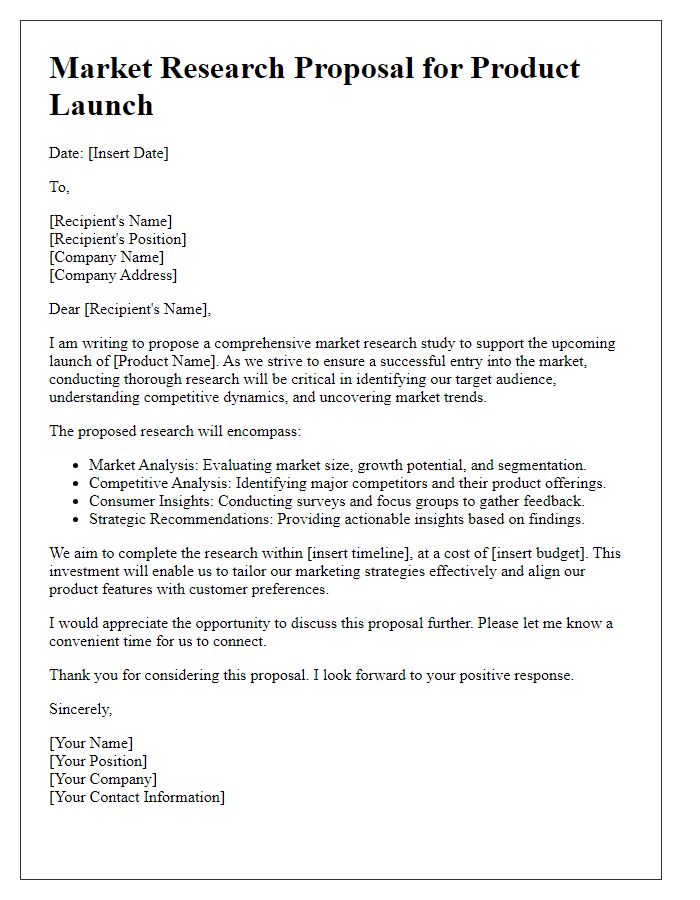
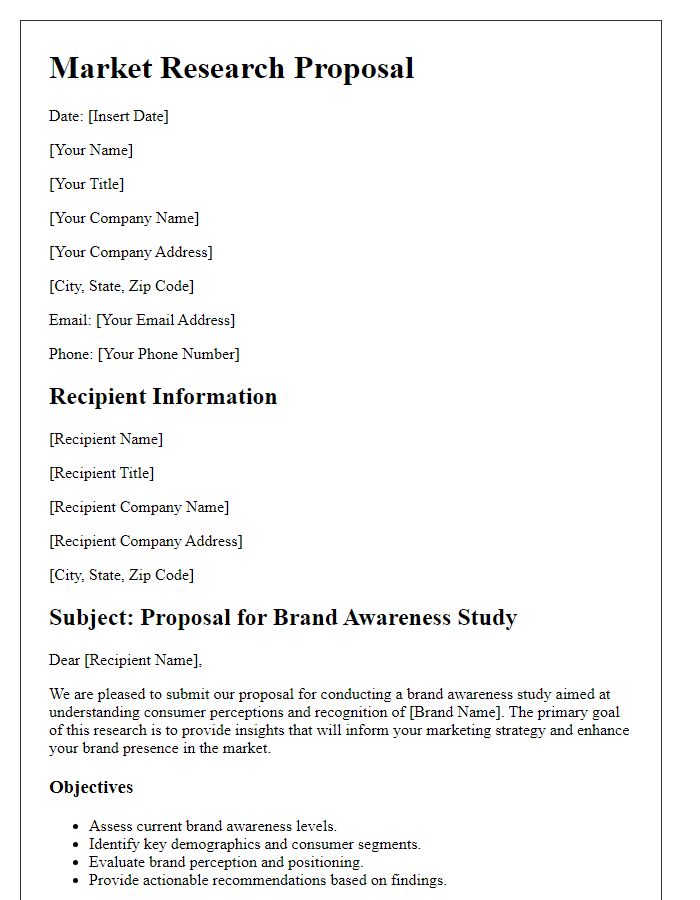
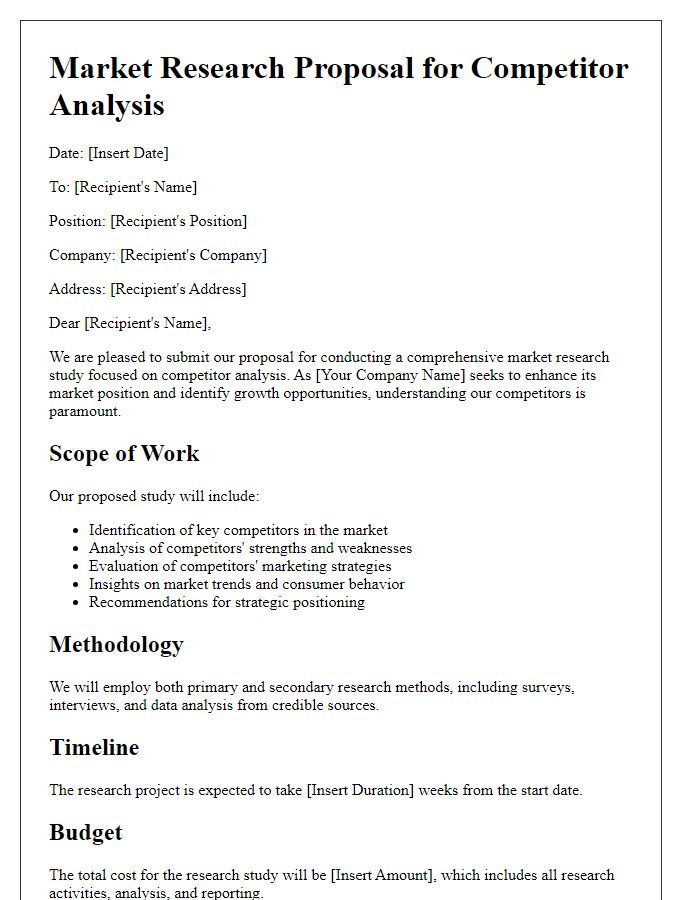
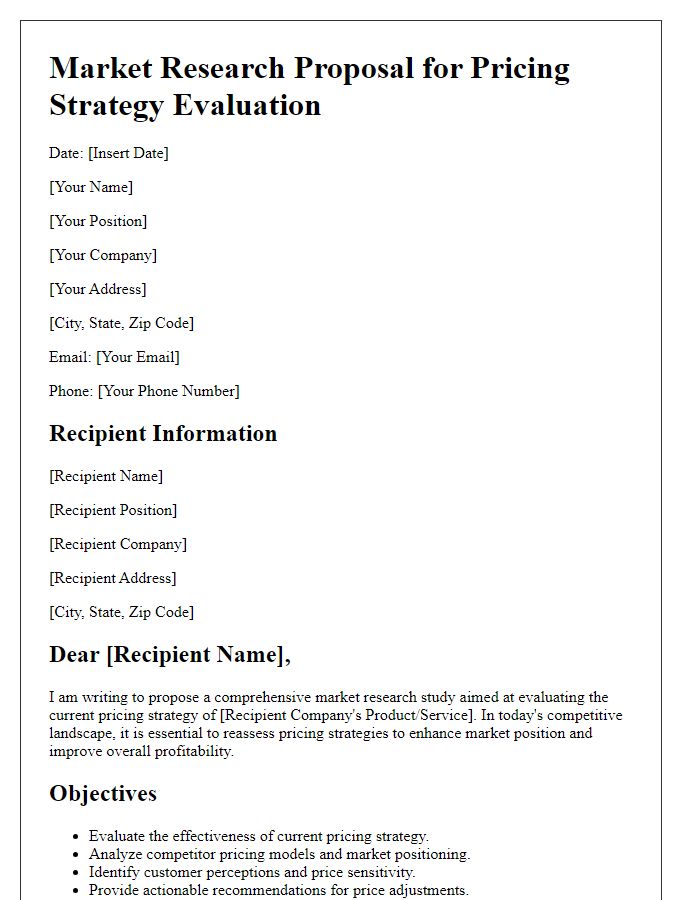


Comments